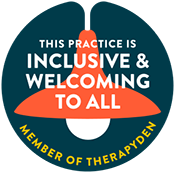Eye Movement Desensitization and Reprocessing (EMDR) is a therapeutic technique designed to help you process and heal from traumatic experiences. It was developed in the late 1980s by Francine Shapiro and has since become a widely recognized treatment for trauma and Post-Traumatic Stress Disorder (PTSD). EMDR works by using bilateral stimulation, often through guided eye movements, to help the brain reprocess distressing memories. This process helps you reframe negative thoughts and emotions associated with traumatic events, allowing you to experience relief and healing.
Unlike traditional talk therapy, EMDR focuses on processing the memories that contribute to emotional distress rather than simply discussing them. Therefore, EMDR is a somatic therapy, or a body-centered type of counseling. The therapy is conducted in a structured format, where your EMDR therapist at Anchor Therapy guides you through different stages, including identifying distressing memories, targeting specific emotions, and using the bilateral stimulation to facilitate reprocessing. Over time, this helps to reduce the emotional charge attached to those memories, making them less intrusive and more manageable. Research has shown significant success in treating a range of mental health conditions, including PTSD, anxiety, and depression, with EMDR.













